The Bare-Throated Tiger Heron & the Snake
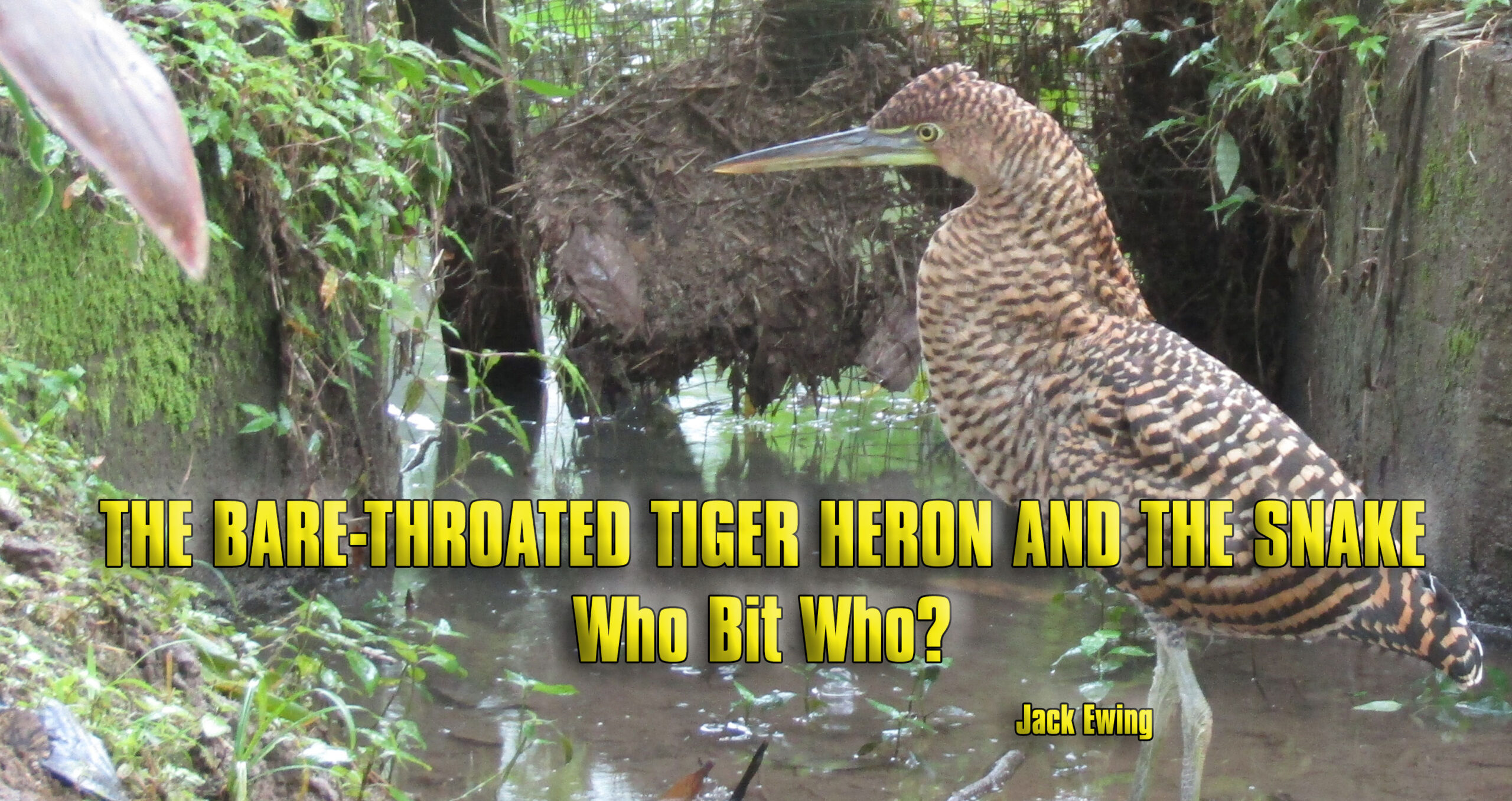
I had lived and worked on Hacienda Barú for 23 years before sighting my first bare-throated tiger heron, so called because of the featherless, yellow skin on its throat. Today, 30 years later, with much more natural habitat and less hunting, we see them on a daily basis.
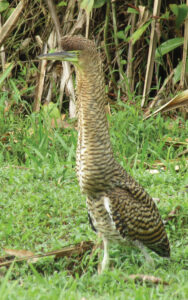
Earlier this year, Diane and I noticed that a pair of tiger herons were carrying sticks, twigs, and other nesting material to a tree near our house, but the branches were so thick that we couldn’t find the nest. About two months later, a ball of white fluff could be seen moving around in the part of the tree where we suspected the nest was located. It grew rapidly to near adult size, molted, and one day fledged, now with the speckled plumage of a juvenile. I took lots of photos that first day as the young heron explored its new world. I had seen adult tiger herons in many different positions, hunched over, stretched up, neck twisted or arched, or feathers ruffled, but this youngster took the tiger heron’s shape-changing ability to extremes. The photos tell the story.
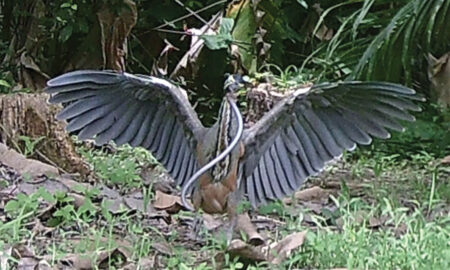
Trail cameras are lots of fun because when you insert the memory card from the camera into your computer, you never know what is going to pop up on the screen. About a year ago a camera near the house captured an image a large adult tiger heron, wings spread, with a snake’s head in its mouth, and the body dangling down in an S-shaped curve all the way to the to the ground. I stared in amazement at the photo. Herons can’t chew, and I doubted it could swallow a snake that size 60 to 70 cm (25 inches) and as big around as a broomstick. “Maybe it’s just killing the snake”, I thought, “and is going to leave it for the scavengers”. Then it occurred to me that maybe I had it backwards. Maybe the snake was biting the heron. The photo wasn’t clear enough to be sure. I posted it on Facebook, and a couple of the viewers thought the snake had bitten the bird just above the beak and gotten its fangs stuck. “We’ll never know for sure,” I decided.
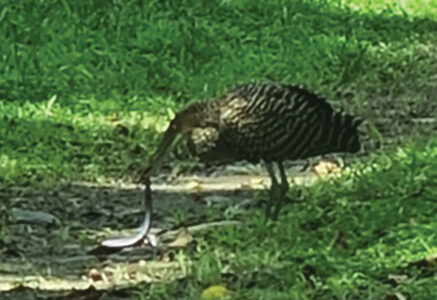
Six months later, after the tiger-heron chick had fledged, I was driving down our long driveway, and an adult tiger heron walked out onto the lane with a snake’s head in its mouth, shaking it and slamming it against the ground, obviously trying to kill it. This time there was no question about who was biting who. This snake was considerably smaller than the one from the trail camera. As I slowly approached in the car the heron moved off the road and disappeared into the bush, dragging the dead or severely battered snake along with it. “Well, I guess that settles it”, I thought. “Now we know for sure who was doing the biting”.
Less than a week later, I was again driving out to the highway and, in almost the exact same location, stood the juvenile. Slowing and cautiously approaching, I couldn’t believe what I was seeing. Right before my eyes was, a repeat performance. The young heron’s beak was clamped onto a snake’s head and, just like the adult a week earlier, was shaking it and slamming it against the ground. This time I had my phone handy and took photos through the windshield. In a flash, the bird whipped the snake into the air, and it instantly disappeared down that heron’s long throat and neck where it remained lodged. A few minutes later, when the young tiger heron moved off to the side, its neck was still bulging. The snake eventually went all the way down to the stomach because I saw the juvenile again the next morning and its neck was back to normal size.

I posted the photos on Facebook, and this time one of my friends who works as a tour guide on the canals of Tortuguero commented that he had seen bare-throated tiger herons eat snakes, fish, and even baby crocodiles. Since they must swallow it whole, the larger prey usually gets stuck. I don’t know if the bird is able to move it on down to its stomach bit by bit or if digestive acids gurgle up and begin dissolving the prey while it’s still in the tiger heron’s gullet. Just imagine what a whopper of a case of acid reflux that must be.
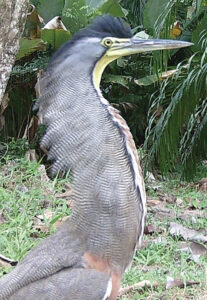
Jack Ewing was born and educated in Colorado. In 1970 he and his wife Diane moved to the jungles of Costa Rica where they raised two children, Natalie and Chris. A newfound fascination with the rainforest was responsible for his transformation from cattle rancher into environmentalist and naturalist. His many years of living in the rainforest have rendered a multitude of personal experiences, many of which are recounted in his published collection of essays, Monkeys are Made of Chocolate. His latest book is, Where Jaguars & Tapirs Once Roamed: Ever-evolving Costa Rica.
